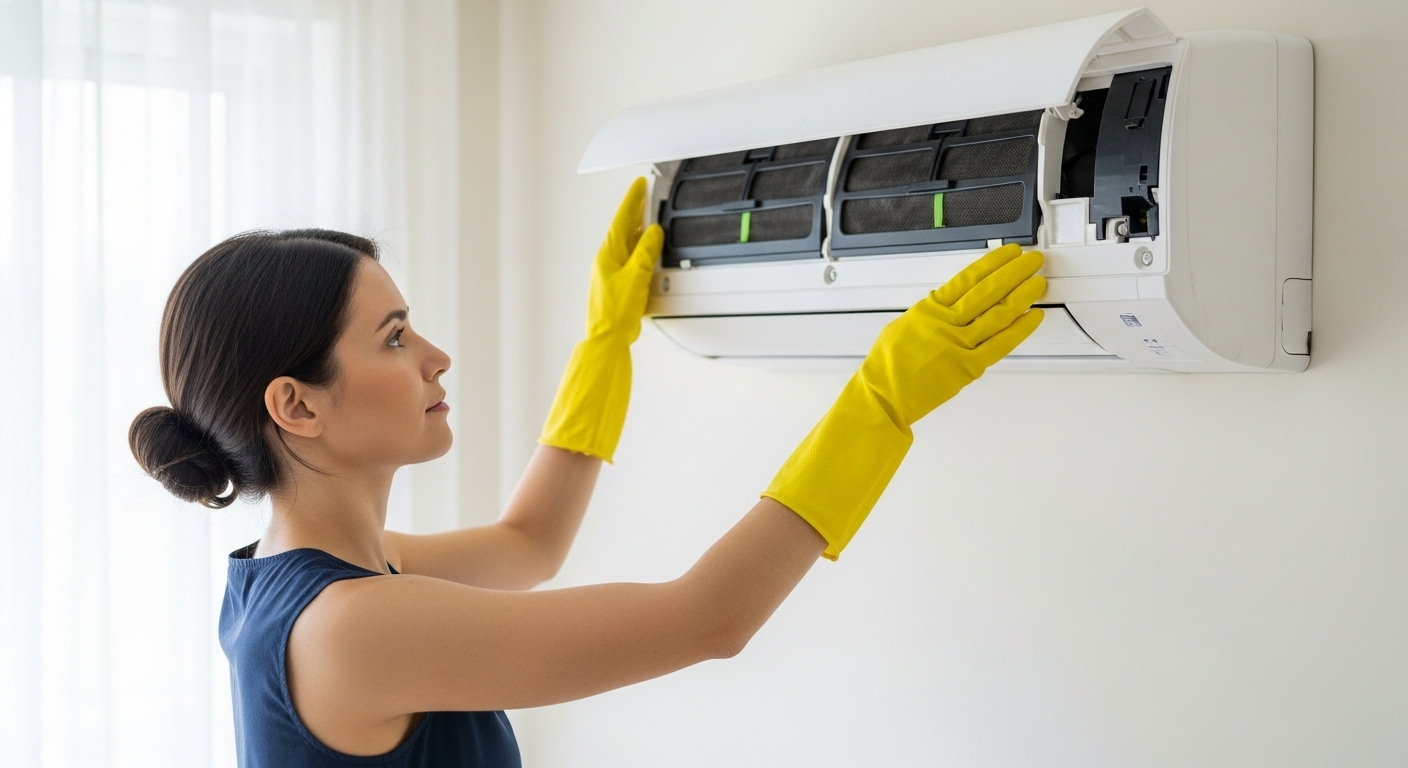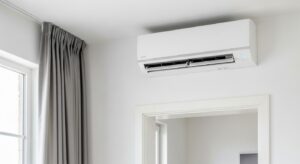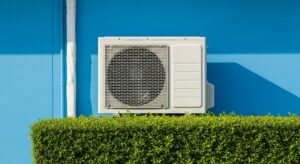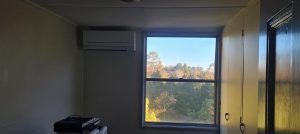Air conditioners work hard in homes across the Blue Mountains, keeping interiors comfortable through hot summers and chilly winters. But like any appliance, they need proper care to run efficiently. One of the most overlooked aspects of air conditioning maintenance is cleaning. Dust, mould, and debris can quickly build up, reducing performance, driving up energy bills, and even affecting indoor air quality.
Homeowners often wonder: should I clean my air conditioner myself, or is it better to call in a professional? The answer depends on the type of cleaning required, the age and condition of your unit, and your own level of confidence with basic maintenance tasks. This article breaks down the differences between DIY cleaning and professional servicing, helping you decide what you can safely do on your own and when it’s best to rely on an expert.
Why Cleaning Matters
Before diving into the options, it’s worth understanding why regular cleaning is so important. Air conditioners filter and circulate the air inside your home. Over time, dust, pollen, mould spores, and even bacteria can accumulate inside the unit. If left unchecked, these contaminants can affect airflow, reduce cooling and heating efficiency, and contribute to allergies or respiratory issues.

A clean air conditioner:
- Improves energy efficiency, saving you money on power bills
- Extends the life of the unit by reducing strain on parts
- Enhances indoor air quality, making your home healthier
- Provides more consistent cooling and heating
With those benefits in mind, the question becomes: what can you tackle yourself, and what should be left to the professionals?
DIY Cleaning: What You Can Do Safely
Many routine cleaning tasks are simple enough for homeowners and can be done without special equipment. These tasks keep your system in good shape between professional services.
Cleaning or Replacing Filters
Filters are the first line of defence against dust and debris. They should be cleaned every two to three months, or more often if you have pets or live in a dusty area. Most split system units have removable filters that can be rinsed under running water, dried thoroughly, and reinstalled. In some models, filters may need replacement rather than washing.
Wiping Down Exterior Surfaces
Dust and dirt accumulate on the outside casing and vents. Wiping these surfaces with a soft cloth or damp sponge keeps your unit looking tidy and prevents debris from entering.
Checking the Outdoor Unit
Leaves, dirt, and twigs can build up around the outdoor compressor. Gently clearing away debris and trimming plants back at least half a metre helps maintain airflow. Avoid using high-pressure water or opening the unit casing yourself.
Running in Fan Mode
Occasionally running the system in fan-only mode can help dry out internal components and reduce moisture build-up that may lead to mould. This is especially useful in humid summer weather.
These DIY steps are low-risk, inexpensive, and help your air conditioner perform better day to day.
The Limits of DIY Cleaning
While homeowners can manage basic cleaning, there are definite limits. Internal parts of an air conditioner, such as coils, drainage trays, and fans, are harder to reach and require specialised tools and cleaning agents. Attempting to dismantle a unit without training risks damaging delicate components or voiding warranties.
More importantly, mould and bacteria growth inside the system cannot be adequately removed with surface-level DIY cleaning. Using the wrong products, such as household bleach or harsh chemicals, can corrode parts and create harmful fumes. This is where professional cleaning becomes essential.
Professional Cleaning: What the Experts Do
Professional servicing goes beyond the surface. Qualified technicians use specialised tools, non-toxic cleaning agents, and safety protocols to thoroughly clean and sanitise your system.
Deep Cleaning Internal Components
Technicians can access and clean evaporator and condenser coils, drainage trays, and fans. These are areas where dust and mould tend to accumulate, affecting efficiency and indoor air quality.
Mould and Bacteria Treatment
Professionals use commercial-grade cleaners to remove mould spores and bacteria safely. This helps prevent odours, respiratory issues, and cross-contamination throughout your home.
System Inspection and Tune-Up
During a cleaning visit, experts also check refrigerant levels, test electrical connections, and inspect parts for wear and tear. Early detection of issues can prevent costly breakdowns.
Safety and Compliance
Air conditioning units contain electrical components and refrigerants that require licensed handling. A professional ensures everything is compliant with Australian safety standards.
When to Call in the Professionals
So, when is it time to move beyond DIY and book a professional service? Here are clear signs:
- Visible mould or musty smells coming from the unit
- Reduced airflow or inconsistent heating and cooling
- Unusual noises such as rattling or grinding
- Leaking water or visible condensation inside the unit
- High energy bills despite normal usage patterns
- It’s been more than a year since your last professional service
For most households, a professional cleaning once a year is ideal, with DIY maintenance in between. In homes with pets, allergy sufferers, or high humidity, more frequent professional attention may be needed.
Balancing DIY and Professional Care
Think of air conditioning care as a partnership. DIY cleaning handles the small, regular tasks that prevent dust build-up and keep the system ticking over smoothly. Professional cleaning, on the other hand, ensures a deeper level of care, addressing mould, sanitisation, and long-term performance. Together, these approaches maximise efficiency, comfort, and lifespan.
Cost Considerations
Some homeowners hesitate to book professional services due to cost. While professional cleaning does require an upfront expense, it often saves money in the long run. A clean, efficient system uses less electricity, suffers fewer breakdowns, and lasts longer. Compared to the expense of replacing a unit prematurely, annual servicing is a worthwhile investment.
DIY tasks, by contrast, cost little more than your time. A balanced approach that combines both methods offers the best return on investment.

Health Benefits of Professional Cleaning
Beyond comfort and efficiency, professional cleaning plays a vital role in protecting your family’s health. Mould spores, dust mites, and bacteria can thrive inside neglected air conditioners, circulating allergens every time the unit runs. For households with asthma or allergy sufferers, this can make symptoms worse. A professionally cleaned system delivers cleaner, healthier air, improving the quality of life inside the home.
Final Thoughts
The question of DIY versus professional cleaning is not an either-or scenario – it’s about knowing your limits and recognising when expert help is needed. Homeowners can and should take charge of simple maintenance tasks like cleaning filters, wiping surfaces, and clearing outdoor units. These steps are easy, effective, and help your air conditioner run smoothly.
However, when it comes to mould removal, deep cleaning internal components, and ensuring compliance with safety standards, professional technicians are the only safe option. Regular servicing not only improves efficiency and reduces energy costs but also protects your health and extends the lifespan of your system.
In the Blue Mountains, where climate extremes place heavy demands on air conditioners, combining DIY maintenance with professional cleaning is the smartest way to keep your system reliable year-round. By following this balanced approach, you can enjoy comfortable, clean air in every season, without the stress of unexpected breakdowns or sky-high energy bills.





